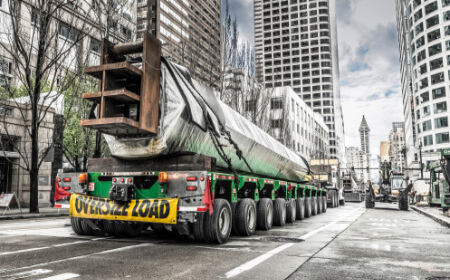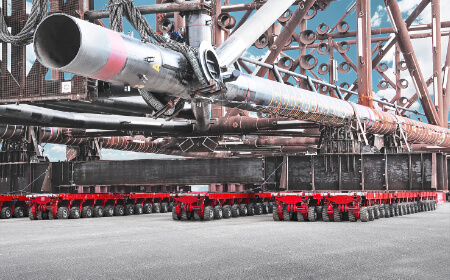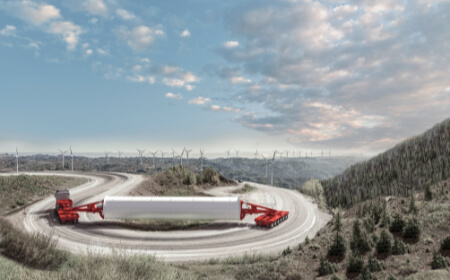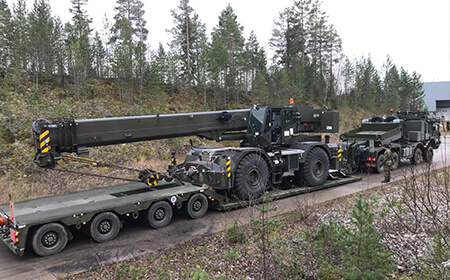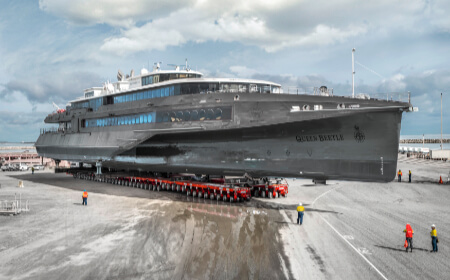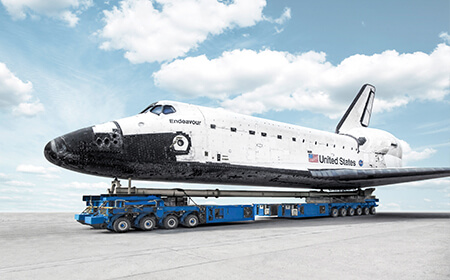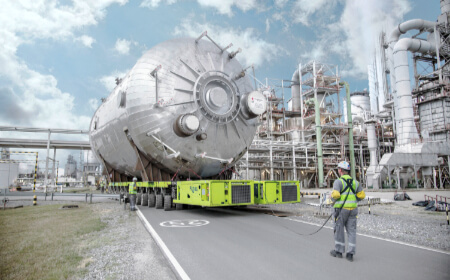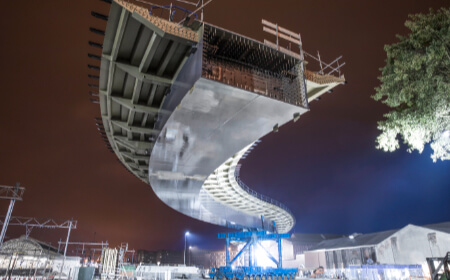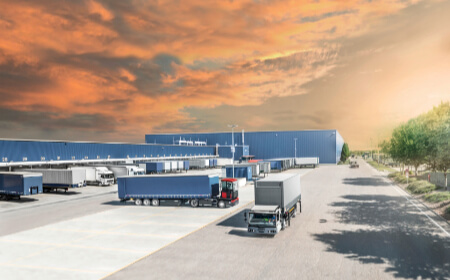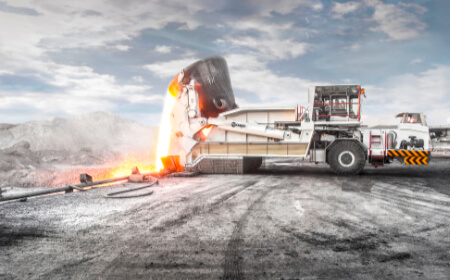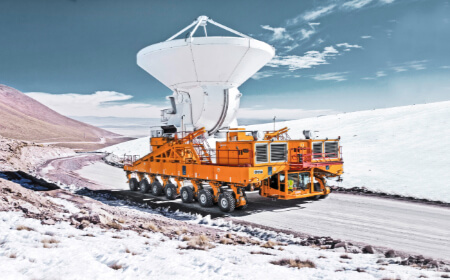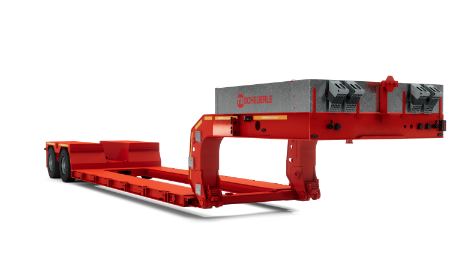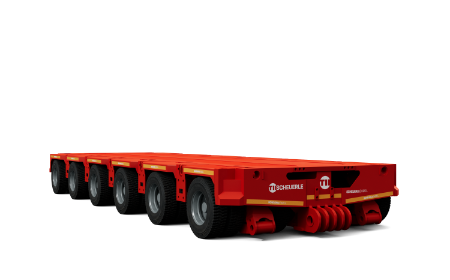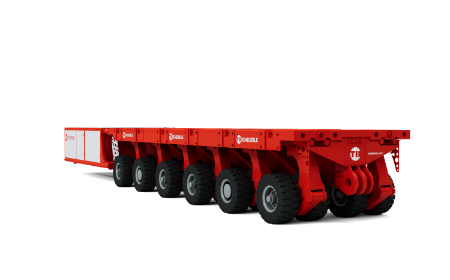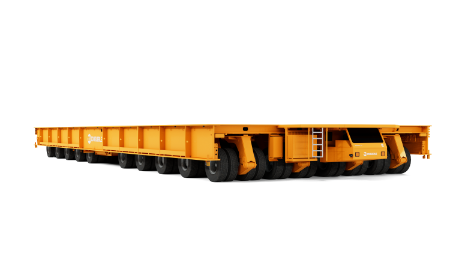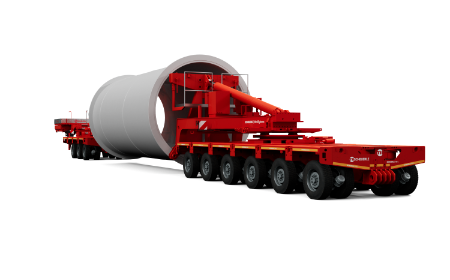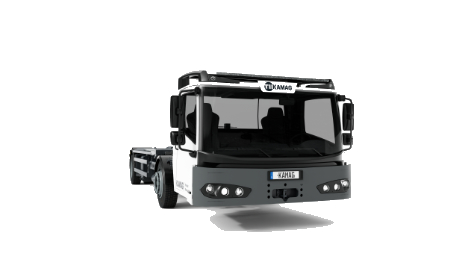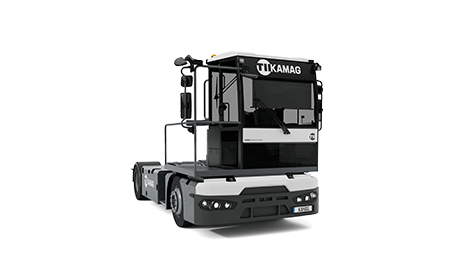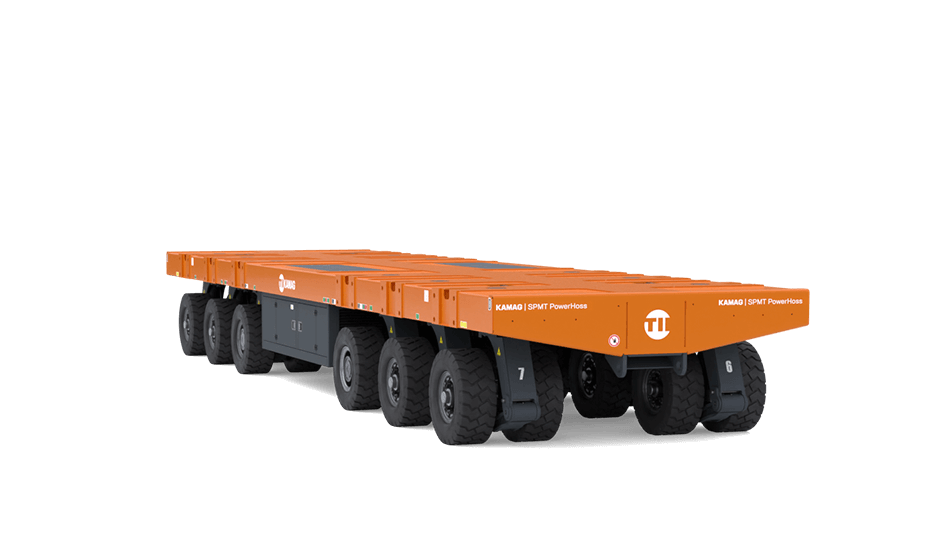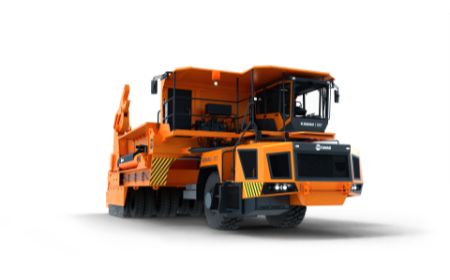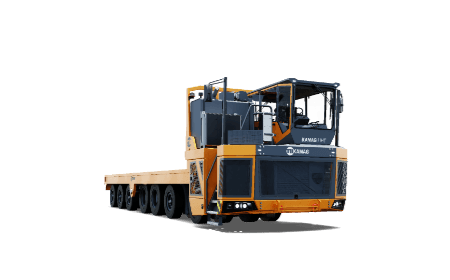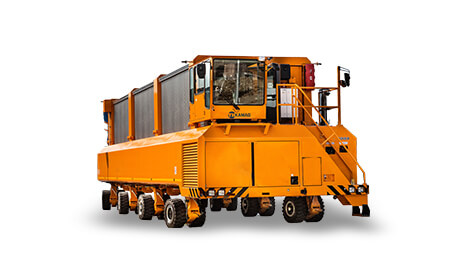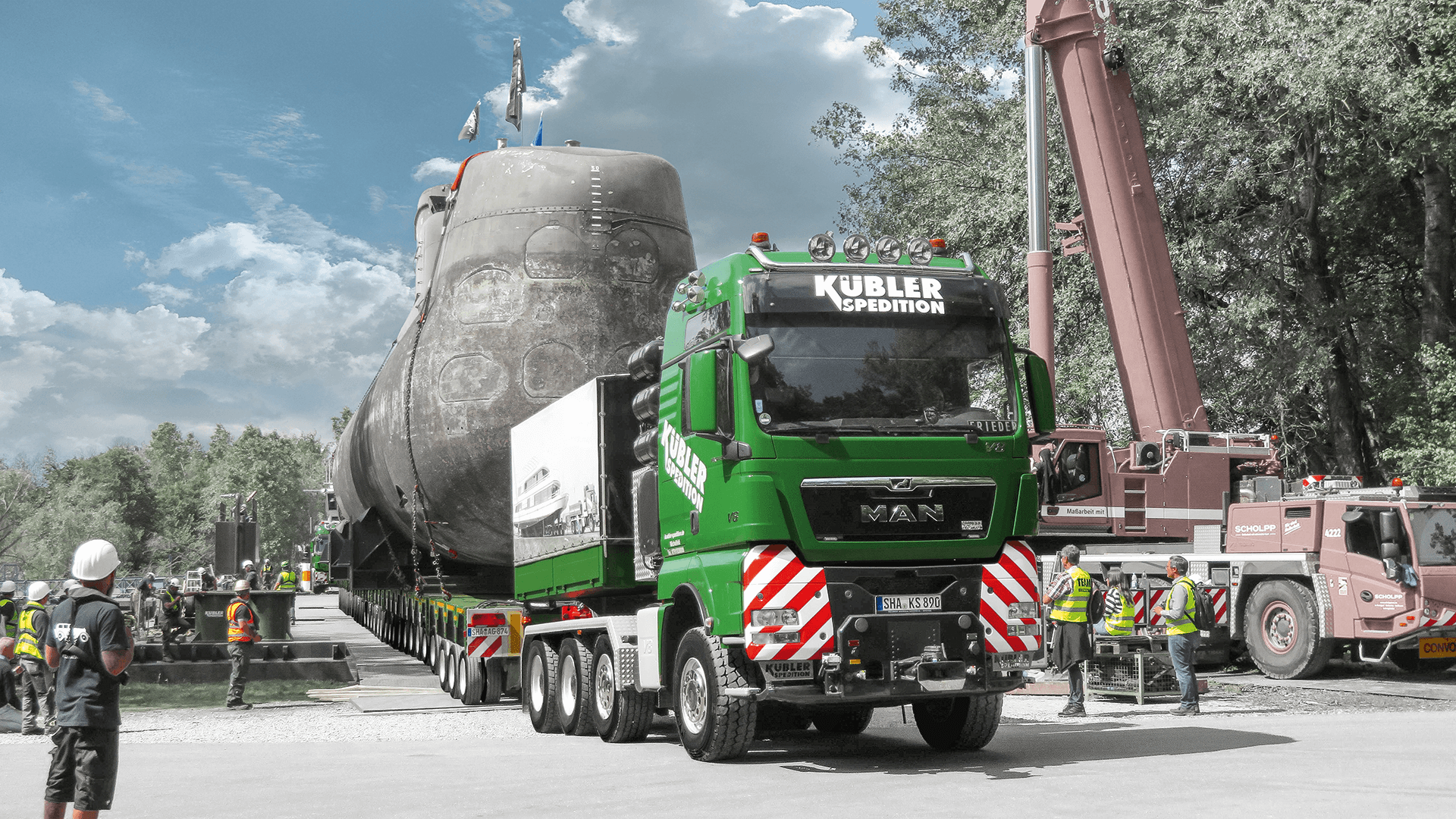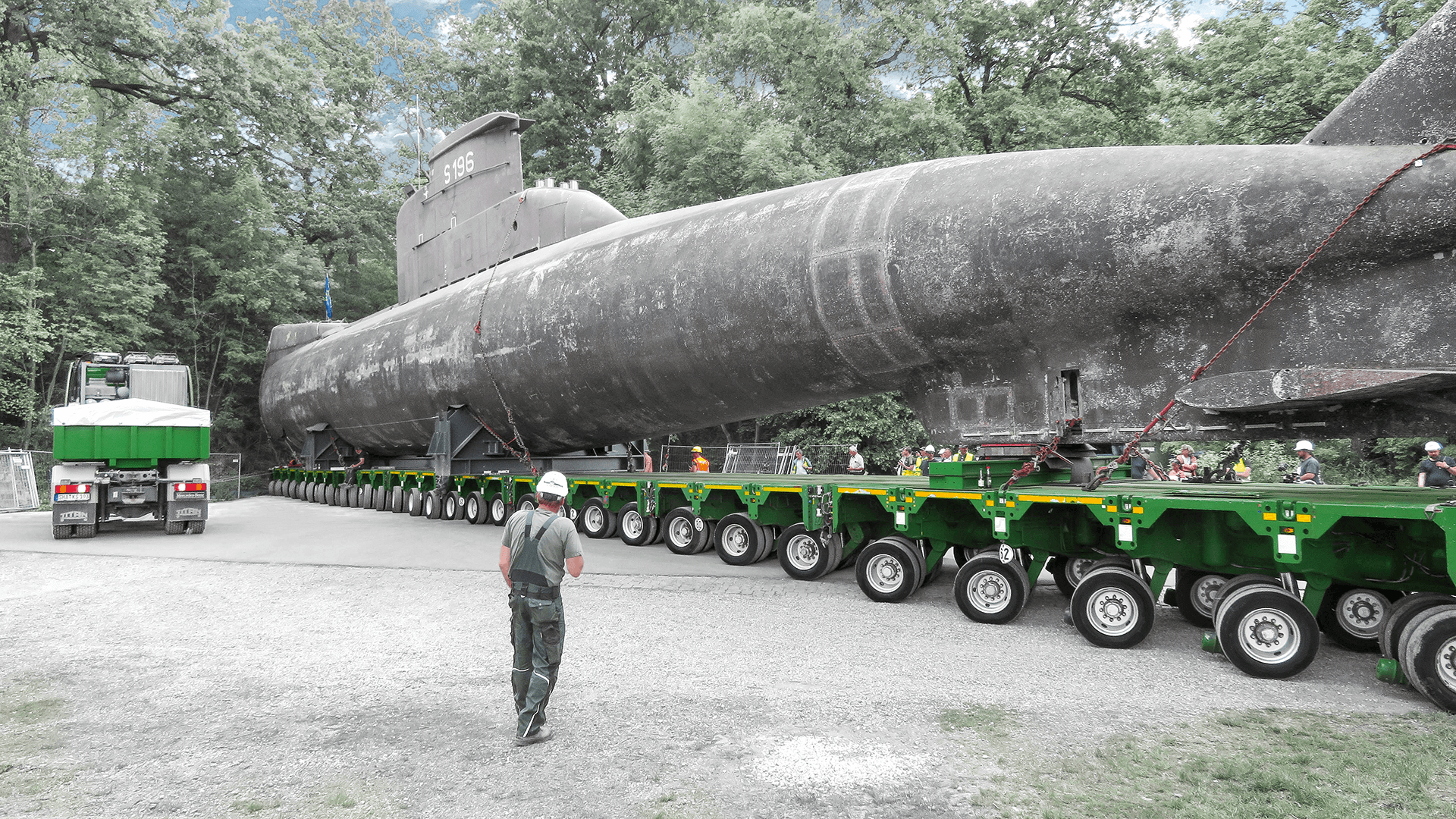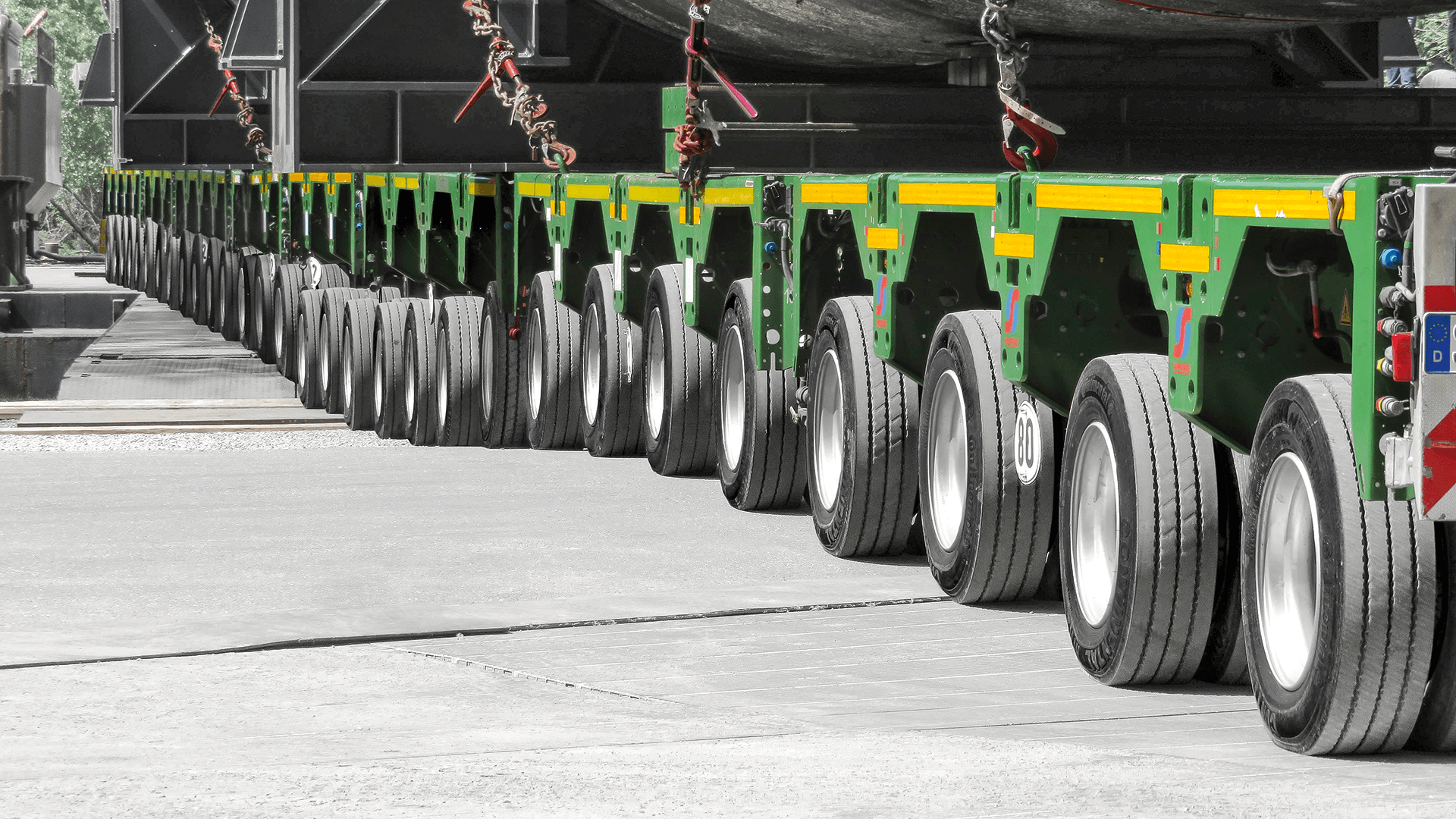It could well be the longest rigid platform trailer combination ever seen on public roads in Germany up to now: a professional team of specialists from Spedition Kübler transported a 50 meter long submarine weighing almost 500 t on 30 SCHEUERLE InterCombi axle lines from the well-known natural harbour at Speyer to the Technik Museum four kilometers away. Special transport expert Frieder Saam confirmed: without Kübler's know-how, along with the right equipment, the 90 m long and approx. 590 t push-pull vehicle combination would not have been realized. The decisive factors were the high degree of maneuverability and robustness of the SCHEUERLE InterCombi modules.
One more deep breath: At the time of the very first attempt, the push-pull vehicle combination did not succeed in entering the grounds of the Technik Museum Speyer. It was a matter of just a few centimeters. A fire alarm pillar, which was not dismantled for safety reasons, protruded into the designated route. The vehicle combination measured more than 70 m long and was forced to reverse out. The big challenge with this heavy transport was above all its length. 30 SCHEUERLE InterCombi axle lines were required to evenly distribute the 485 t weight of the U17 submarine and the almost 100 t of the SCHEUERLE InterCombi axle lines in order to ensure that the road only had to accommodate 2.48 t per wheel.
The low wheel load was intended to fully protect the road. Finally, the 50-year-old U17, a Class 206 A submarine that is 54 m long, nine meters high and six meters wide, arrived at the natural harbour of Speyer by means of a ferry – this a nature reserve whose forest floor always requires special protection. In combination with a tractor unit and a pusher machine, the complete vehicle combination had a length of almost 70 m. At times, additional towing and pushing vehicles were required to protect the road surface from the immense traction so that the actual vehicle combination grew to around 90 m.
Five years of planning for the transport from the Kiel Fjord to the Museum of Technology
A second attempt proved successful. The transport combination rolled slowly down the museum entrance. It only took a few minutes for the transporter and the U17, which is on loan from the military technology study collection of the Federal Office of Bundeswehr Equipment, Information Technology and In-Service Support, to be in place on the open-air site of the Technik Museum Speyer where it will be subsequently set down awaiting restoration. The countless number onlookers enthusiastically applauded.
Frieder Saam, professional driver and transport manager at Michelfeld-Erlin-based Spedition Kübler, explains: “It´s always very pleasing when the load has reached its destination without being damaged. After all, five years of planning went into this special transport.” According to the experienced special transport expert, Saam, in addition to know-how and driving skills, the right transport equipment is also required. The 30 InterCombi axle lines come from TII SCHEUERLE, the industry expert for heavy transport on paved roads as well as off-road, a subsidiary of the TII Group. "For such a transport, we needed high-quality and robust modular axle lines," explains Frieder Saam.
The solid and versatile SCHEUERLE InterCombi is highly maneuverable and transports high payloads
The SCHEUERLE InterCombi series precisely meets these requirements. It consists of a modular platform vehicle with a 3 m width with which a large range of transport assignments can be accommodated. Due to the low platform height of 1190 millimeters in the driving position and the wide support base, the axle lines are also suitable for loads with high centers of gravity. As in the case of the U17 transport, InterCombi vehicle combinations are not only used as trailer combinations but also as tractor-trailer combinations or as self-propelled transporters.
Through the possibility of coupling the modules longitudinally and transversally, even the heaviest of transports on public roads can be realized. The high level of flexibility and variability of the InterCombi modules makes them an all-rounder for transporting the heaviest construction machinery and mining equipment, long materials, wind turbine components, transformers, bridge elements and other heavy goods applications.
Despite bottlenecks and obstacles, the InterCombi managed the route problem-free
However, the entrance to the museum was not the only testing challenge along the four-kilometer route from the natural harbour through the industrial area. Only a few hundred meters before the finish line, there was another close call. At an intersection in the industrial area there was a set of traffic lights and a stationary car in the designated slewing area. Both had to go. After this, the maximum steering angle of +/- 60 degrees of the highly maneuverable InterCombi was sufficient in order to safely steer the vehicle combination around the bend. The rest of the route ran smoothly in spite of the oversized dimensions of the transport. Precisely because of the qualities of the InterCombi. The high axle compensation of the hydraulically supported pendulum axles totalling 650 millimeters was required at a number of places in order to drive the load over roadway obstacles such as kerbs or to negotiate inclined grassed areas at the side of the roads covered with metal sheeting by means of the automatic load levelling.
Loading the U17 onto the InterCombi modules the day before went smoothly. The submarine, which was previously anchored in the Kiel Fjord, arrived here after crossing the North Sea on an ocean-going floating pontoon followed by a long journey down the Rhine. The trailer reached the shore-connected pontoon via a ro-ro ramp where the submarine was hydraulically raised to a height of 1.4 m using eight hydraulic cylinders, each with a lifting capacity of 100 t, so that the 30 axle lines could finally be pushed underneath.
U17 will be on the road again in 2024 to the Technik Museum Sinsheim
Next year, the U17 will be transported in the opposite direction from the Technik Museum Speyer back to the natural harbour and once again onto the pontoon. The terminal port for the submarine is the Technik Museum Sinsheim which is located 40 km away. Once again, the heavy-haulage professionals from Kübler will use the transport equipment from TII SCHEUERLE to ensure that the maritime museum exhibit arrives safely and delight many onlookers.
